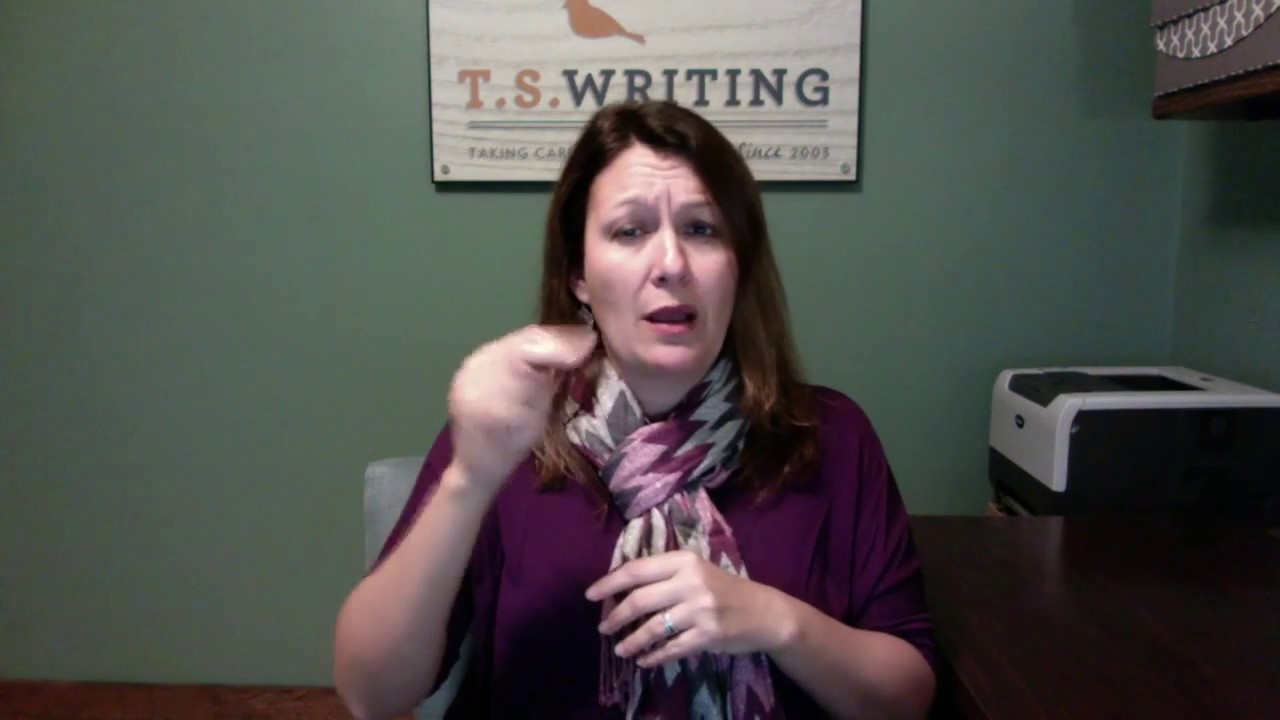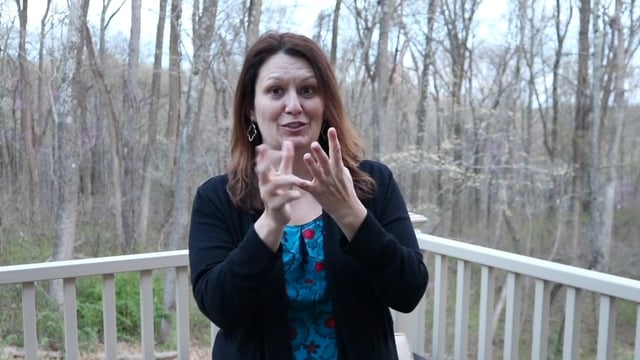This article originally appeared in the spring/summer 2014 issue of the RID VIEWS (Volume 31, Issue 2).
View it as a PDF file: Suggs-Bowen_Article.pdf
By Doug Bowen-Bailey, CI/CT, and Trudy Suggs, CDI
In the field of interpreting, a critical question is how to share power in leadership. While interpreters might often think of this at the organizational level, they also need to see this power-sharing method in daily practice.
As certified interpreters, we have worked together on many projects. We are also both passionate about language, both written and signed. In our partnership, we frequently have had to navigate ways to share power as a hearing person and a deaf person. Our work, however, often focuses on much broader issues than linguistics.
One such example of power-sharing becoming an issue emerged during a video project where we worked with a hearing project manager in creating an ASL version of an English-based curriculum. The project manager did not sign and was relatively new to the deaf community, although he had worked on other deaf community projects in the past. He had tremendously good intentions and was very committed to access. Yet at the beginning of this collaboration, he frequently communicated via telephone with Doug on project details, and Doug would then let Trudy know of the conversations. The conversations were rarely long or substantive, but they put Doug in the role of gatekeeper. As a result, Trudy responded to ideas rather than helping to create them, a significant shift since it was Trudy who had initially advocated for Doug’s involvement in this project.
After a few times, Trudy expressed a bit of concern about this process. Doug agreed, especially since he had also noted this pattern. Together, they determined that using a text-based online meeting platform would allow everyone to have equal access (with the added benefit of having a transcript for notes). Also discussed was who should propose this idea to the project manager; we decided that Doug should do it because, as a hearing person, there was less risk that he would be perceived negatively for challenging a hearing norm. Doug then offered this alternative to the project manager, pointing out the barriers created by the phone calls. The project manager quickly agreed, and the text chat turned out to be very successful in allowing all parties to more fully contribute.
Such instances often are so subtle that they don’t appear as clear delineations of power, but over time, they can become leadership challenges. In exploring such daily opportunities for sharing power, a better understanding of leadership can be achieved. We don’t intend to lift up our choices as the ideal model; however, there are principles in how we responded that may be helpful. The steps in that process consisted of:
- Understanding the power of gatekeeping
- Committing to shared decision-making
- Analyzing the dynamics of power and risk
- Creating a joint plan of action
Understanding the Power of Gatekeeping
It is important to look at the function and power of gatekeeping. In this example, gatekeeper meant being in a position to allow access to a system or institution. Initially, Trudy was the gatekeeper for Doug by advocating for his involvement in the project. However, in American dominant hearing culture, society is much more comfortable with hearing people in the role of gatekeeper. Whether rooted in audism, or in the ease that many find in communicating through spoken English, or a combination of both, Doug quickly became the gatekeeper.
In an August 2014 interview, Jimmy Beldon identified in the dynamics of opportunities for hearing and deaf interpreters:
…sometimes CDIs will see doors open and invite a hearing interpreter to work — in a team. But then the hearing interpreter walks ahead and goes through the door alone, leaving the CDI behind. When the hearing interpreter enters alone, it means that interpreter starts building a relationship with people and with clients while also building skills. As typically is the case, when people build skills, they naturally become leaders and accept leadership roles.
Such a pattern leads to a power imbalance. Fortunately, we were able to recognize this dynamic in that particular project and managed it in a way that did not leave either of us behind. In fact, for certain projects, it has been critical for Trudy serve as gatekeeper. For example, we have needed to recruit talent who are Deaf and fluent in ASL. Her understanding of and relationships within the Deaf community make her much more effective in this role than Doug can be.
Valuing the Wisdom of the Deaf Experience
A common approach to making decisions about deaf people is to simply exclude them and determine, based on various altruistic and systematic values, what is “best” for them. As discussed in Trudy’s Deaf Disempowerment and Today’s Interpreter presentation for Street Leverage, disempowerment is the taking away of power. She shares examples of how everyday disempowerment happens at minuscule, yet influential, levels. This, in turn, creates a cycle of situational disempowerment and economic disempowerment — thereby continuing the (unintentional and intentional) oppression of deaf people in every facet of their lives.
In the aforementioned project, Doug’s moving into the gatekeeper role certainly could have had economic consequences. If Doug had ignored or minimized Trudy’s concerns, he could have gone on to build relationships that led to further projects for him while leaving Trudy behind, creating economic and situational disempowerment.
In her StreetLeverage presentation, Trudy pointed out some other approaches:
By refusing to control situations, by deferring to the deaf person whenever appropriate, by allowing the consumers to control the situation, and by ensuring that you don’t speak on behalf of the entire deaf community especially if you’re hearing—you can take steps towards ensuring that deaf people retain their power while you do your job. (Suggs, 2012b)
The idea of hearing people deferring to deaf people is not done out of pity or patronization. The justification for it is not that deaf people have experienced oppression, so therefore hearing interpreters should simply back off. Rather, it comes from a valuing of the wisdom that comes from Deaf epistemology, which is defined as “the nature and extent of the knowledge that deaf individuals acquire growing up in a society that relies primarily on audition to navigate life” (Hauser et al., 2010, p. 486). In other words, the experience of being deaf in a hearing world provides insights that hearing interpreters can’t have access to unless they are open to following deaf people’s lead.
Another deaf-hearing team experience showcases this deference as a key step. Nic Zapko and Patty Gordon are the creators of StoryBlend, an immersion experience that uses theater to build ASL and interpreting skills. Nic, who is deaf, and Patty, who is hearing, have noticed a consistent dynamic in the process as it moves from the first to the second week. Initially, all interactions are in ASL. By the second week, participants begin to work on translating ASL into English. At some point, the atmosphere shifts from being Deaf-centric to hearing-centric. Nic was the first to notice this; in fact, Patty states that she often doesn’t see or sense it until Nic points it out. She has learned to defer to Nic’s identification of the shift so that it can be addressed for the benefit of all involved with StoryBlend.
Analyzing the Dynamics of Power and Risk
In identifying issues related to leadership and power-sharing, the next step is to make an assessment of the dynamics of power and risk. Valuing the wisdom of and deferring to the leadership of deaf people does not mean that hearing interpreters can, or should, simply step back from taking action or responsibility. In some situations, a deaf person may provide the insight and leadership, but it may be too risky to be the point person in carrying out an action. Consequently, a hearing interpreter may serve that purpose as an ally. This does not mean that the deaf person is giving up power to someone with privilege. Rather, taking an honest assessment of the dynamics of the situation helps figure out the best way to address how to achieve an objective with the least risk.
In the initial example with the project manager, we determined that Doug had less to risk in challenging the hearing norm of phone conversations. One of the ironies of hearing privilege is that hearing people can often bring forward the exact same critique of a situation and be perceived as insightful, whereas a deaf person may be perceived as militant, divisive, or angry. Trudy shared an example of this labeling in another StreetLeverage presentation (Suggs, 2012a). In that situation, the deaf people involved were simply sharing experiences, yet they were perceived as venting, divisive and angry. (It’s also important to note that anger can be a legitimate response to experiences of oppression and using such labels can be expressions of privilege.)
The dynamics of audism often means the risk can be even more subtle. To use a non-interpreting example, Oprah Winfrey was denied access to a store in Paris. She felt that she had been discriminated against because she was black. The store claimed that they were setting up for a private party and couldn’t let her in. Tim Wise suggests that the reason doesn’t matter. What is more significant is that “Oprah Winfrey, with all her money, all her power, and all her influence, still had to wonder, even if only for a moment, whether her race had trumped all that in the eyes of another person” (Wise, 2008, p. 72). Deaf people frequently have similar thoughts and experiences when encountering systems and institutions that favor the ability to hear, or hearing privilege. No matter how competent or powerful those individuals are, the risk of encountering doubt and insecurity is simply a part of living in a hearing-dominated society.
In this context, there may be situations where it seems too risky for a deaf person to be the lead, such as a deaf-hearing interpreting team. If a CDI brings forward a concern to an agency, the agency may view the deaf interpreter as the problem, choosing in the future to hire only hearing interpreters because they are perceived as safe. In addition, while being deaf in a hearing world can provide wisdom and insight, it also can be exhausting. At times, it makes sense for hearing interpreters to serve as allies in taking action. Yet, this is not a decision that hearing interpreters should make without deferring to the deaf interpreters.
Creating a Joint Plan of Action
If the team decides that the hearing interpreter is to take the lead, this should always be part of a joint plan. With the project manager, it made sense for Doug to raise the concern, but it didn’t mean that he acted on his own or that Trudy somehow ceded power to a privileged white, male, hearing interpreter. While in many respects, Trudy provided the leadership in the situation with insight into what was taking place and how to address the situation, Doug still could share his perspectives.
After an action is carried out, it is vital to evaluate the consequences. Throughout the project and even today, we continued to have conversations about the dynamics of interactions. Such a sharing of power is not something can simply be checked off a list. It is a continuing process.
Although such a process can consume energy and requires commitment, the upside is that sharing power does not have to be a zero-sum equation. Deaf people exercising their power do not diminish hearing interpreters’ power. Working together to create a plan of action that takes into account the value of deaf people’s experiences and the dynamics of a situation can be of benefit to all involved.
Beldon, in his interview, ended with an encouraging point in thinking about deaf-hearing interpreting teams:
Hearing interpreters have to help, serve as allies, and promote CDIs as team members. Share the message that it will ensure equivalent messages. It’s about deaf people’s language. Hearing interpreters can do their thing, and let the CDIs do theirs. It’s beautiful.
Deaf and hearing people working together in everyday situations to share leadership and power is just as beautiful, and well worth the energy to make it happen.
References
Beldon, J. (2014, Spring/Summer). Opening the door to CDI leadership. VIEWS. (no page number)
Hauser, P., O’Hearn, A., McKee, M., Steider, A., and Thew, D. (2010). Deaf epistemology: Deafhood and deafness. American Annals of the Deaf, 154(5), 486-492.
Suggs, T. (2012a, August 7). A deaf perspective: Cultural respect in sign language interpreting. Retrieved from http://www.streetleverage.com/2012/08/a-deaf-perspective- cultural-respect-in-sign-language-interpreting
Suggs, T. (2012b, December 11). Deaf disempowerment and today’s interpreter. Retrieved from http://www.streetleverage.com/2012/12/deaf-disempowerment-and-todays-interpreter
Wise, T. (2008). White like me: Reflections on race from a privileged son. Berkeley, CA: Soft Skull Press.
Copyrighted material, used by permission. This article can not be copied, reproduced, or redistributed without the written consent of the authors.





Great great article. Beautifully articulated and written.